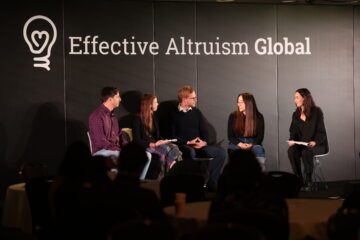Enjoying the content on 3QD? Help keep us going by donating now.
Category: Recommended Reading
The testing of AI in medicine is a mess. Here’s how it should be done
Mariana Lenharo in Nature:
 When Devin Singh was a paediatric resident, he attended to a young child who had gone into cardiac arrest in the emergency department after a prolonged wait to see a doctor. “I remember doing CPR on this patient and feeling that kiddo slip away,” he says. Devastated by the child’s death, Singh remembers wondering whether a shorter waiting time could have prevented it.
When Devin Singh was a paediatric resident, he attended to a young child who had gone into cardiac arrest in the emergency department after a prolonged wait to see a doctor. “I remember doing CPR on this patient and feeling that kiddo slip away,” he says. Devastated by the child’s death, Singh remembers wondering whether a shorter waiting time could have prevented it.
The incident convinced him to combine his paediatric expertise with his other speciality — computer science — to see whether artificial intelligence (AI) might help to cut waiting times. Using emergency-department triage data from the Hospital for Sick Children (SickKids) in Toronto, Canada, where Singh currently works, he and his colleagues built a collection of AI models that provide potential diagnoses and indicate which tests will probably be required. “If we can predict, for example, that a patient has a high likelihood of appendicitis and needs an abdominal ultrasound, we can automate ordering that test almost instantly after a patient arrives, rather than having them wait 6–10 hours to see a doctor,” he says.
More here.
Enjoying the content on 3QD? Help keep us going by donating now.
Effective Altruism: Open Wallets, Empty Hearts
Ari Schulman at The New Atlantis:
 But then there are the parts of effective altruism that are just … weird.
But then there are the parts of effective altruism that are just … weird.
For many of its adherents, EA is not just an idea but a transformational lifestyle. There is no limit to how much of your time, money, and identity you can give over to it. EA is intertwined with the rationalist movement, so much so that they are virtually synonyms, different faces of the same set of thinkers, ideas, and organizations. There are formalized online communities. There are in-person meetups. For $3,900 a pop, you can attend four-day-long rationality training workshops at the Bay-area Center for Applied Rationality. Or you can just read up on what Eliezer Yudkowsky, whose work helped inspire the seminars, calls “The Way” of rationality: “The Way is a precise Art. Do not walk to the truth, but dance. On each and every step of that dance your foot comes down in exactly the right spot. Each piece of evidence shifts your beliefs by exactly the right amount, neither more nor less.” Yudkowsky, currently enjoying a moment as the world’s leading expert on AI safety research, was once better known for his FanFiction.net magnum opus Harry Potter and the Methods of Rationality, which spans nearly twice the length of Anna Karenina.
more here.
Enjoying the content on 3QD? Help keep us going by donating now.
Thursday Poem
Pito, I say
Pito, I say
The wine does flow
And Pito says, it does
flow under the bridge
and the barges do flow
on it, and the wine
does flow
and the world flows away
Sure, I say
that’s how it is
and Diane Arbus, I say
have you dreamt of her
lately
Lately as not, says Pito
I dream of her constantly
I don’t know if it’s real
or not, he says
I envy you, I say
And you with real women, he says
She’s just a dream
woman, he says
It’s all a dream, I say
Life is all dreams, I say
And Diane, I say
How is it with her
It’s good, Pito says, it’s good
Is that real, I say
It’s as real as a dream can be
Pito says
by Leo Romero
from After Aztlan
David R. Godine, Publisher, 1992
Wednesday, August 21, 2024
Free Will: A New Round in an Old Debate
George Scialabba in The Hedgehog Review:
 In 1884, William James began his celebrated essay “The Dilemma of Determinism” by begging his readers’ indulgence: “A common opinion prevails that the juice has ages ago been pressed out of the free-will controversy, and that no new champion can do more than warm up stale arguments which everyone has heard.” James persisted and rendered the subject very juicy, as he always did. But if the topic appeared exhausted to most people then, surely a hundred and forty years later there can’t be anything new to say. Whole new fields of physics, biology, mathematics, and medicine have been invented—surely this ancient philosophical question doesn’t still interest anyone?
In 1884, William James began his celebrated essay “The Dilemma of Determinism” by begging his readers’ indulgence: “A common opinion prevails that the juice has ages ago been pressed out of the free-will controversy, and that no new champion can do more than warm up stale arguments which everyone has heard.” James persisted and rendered the subject very juicy, as he always did. But if the topic appeared exhausted to most people then, surely a hundred and forty years later there can’t be anything new to say. Whole new fields of physics, biology, mathematics, and medicine have been invented—surely this ancient philosophical question doesn’t still interest anyone?
Indeed, it does; it retains for many what James called “the most momentous importance.” Like other hardy perennials—the objectivity of “good”; the universality of truth; the existence of human nature and its telos—it continues to fascinate philosophers and laypersons, who agree only that the stakes are enormous: “our very humanity,” many of them insist.
Why so momentous?
More here.
Enjoying the content on 3QD? Help keep us going by donating now.
AI helps lighten the load on the electric grid – without skimping on people’s energy use
Zoltan Nagy in The Conversation:
 I’m an engineer who studies and develops smart buildings. My lab created Merlin, which learns how people use energy in their homes and adjust energy controls like thermostats to meet their needs while at the same time minimizing the impact on the grid. The system can learn on one set of buildings and occupants and be used in buildings with different controls and energy use patterns.
I’m an engineer who studies and develops smart buildings. My lab created Merlin, which learns how people use energy in their homes and adjust energy controls like thermostats to meet their needs while at the same time minimizing the impact on the grid. The system can learn on one set of buildings and occupants and be used in buildings with different controls and energy use patterns.
We dubbed it Merlin after King Arthur’s legendary magician to reflect the magical nature of the system: It automatically collects data on how people use energy in their homes and identifies opportunities to charge and discharge home battery storage. And it does so in a way that you always have power for whatever you need. So your air conditioning is always available, but at the same time it reduces the strain on the grid – for example, during afternoon peaks.
More here.
Enjoying the content on 3QD? Help keep us going by donating now.
The Counting Project – Tim Harford
Enjoying the content on 3QD? Help keep us going by donating now.
C L R James and America
Harvey Neptune in Aeon:
 In late 1949, the West Indian intellectual C L R James sat down in his residence in Compton, California and, in a burst of creative energy, composed what turned out to be a frightfully prophetic analysis of the historical fate of democracy in the United States. Titled ‘Notes on American Civilization’, the piece was a thick prospectus for a slim book (never started) in which James promised to show how the failed historical promise of its unbridled liberalism had prepared the contemporary republic for a variant of totalitarian rule. ‘I trace as carefully as I can the forces making for totalitarianism in modern American life,’ explained the then little-known radical. ‘I relate them very carefully to the degradation of human personality under Hitler and under Stalin.’
In late 1949, the West Indian intellectual C L R James sat down in his residence in Compton, California and, in a burst of creative energy, composed what turned out to be a frightfully prophetic analysis of the historical fate of democracy in the United States. Titled ‘Notes on American Civilization’, the piece was a thick prospectus for a slim book (never started) in which James promised to show how the failed historical promise of its unbridled liberalism had prepared the contemporary republic for a variant of totalitarian rule. ‘I trace as carefully as I can the forces making for totalitarianism in modern American life,’ explained the then little-known radical. ‘I relate them very carefully to the degradation of human personality under Hitler and under Stalin.’
More here.
Enjoying the content on 3QD? Help keep us going by donating now.
Einstein And Oppenheimer
Ohad Reiss-Sorokin at The Hedgehog Review:
 The actual exchange between Oppenheimer and Einstein was, as it happened, far less cordial than the film’s version. It ended with an exasperated Einstein telling his assistant, “There goes a Narr [fool],” nodding toward the Institute director.
The actual exchange between Oppenheimer and Einstein was, as it happened, far less cordial than the film’s version. It ended with an exasperated Einstein telling his assistant, “There goes a Narr [fool],” nodding toward the Institute director.
More significantly, Einstein’s appearance in that scene is the only one that corresponds with historical reality. In fact, Einstein had only limited dealings with Oppenheimer, who, for one, never would have consulted with his elder about matters such as Teller’s calculations because he knew Einstein had never even asked for a security clearance. That was also the reason Einstein was never invited to participate in the Manhattan Project, not because of his “obsoleteness,” as the film has Oppenheimer say to Strauss (although, after meeting Einstein for the first time, in 1935, Oppenheimer did write to his brother to say that he found Einstein “completely cuckoo”). Most significantly, the scene on the Institute lawn, which we see at three different critical points in the film, is itself a complete fabrication.
more here.
Enjoying the content on 3QD? Help keep us going by donating now.
2024 Olympic Recap
Miles Osgood at n+1:

The show teetered between silliness and “Solennité.” The ongoing reconstruction of Notre Dame inspired a memorable percussive musical score with dancers hanging off the cathedral’s scaffolding, but only before the tribute to Paris’s craftspeople turned to an advertisement for Louis Vuitton. Aya Nakumura blazed down the Pont des Arts, melting down the gold of La Monnaie and the preciousness of the Academie Française into her own coinages and bars, but only before the Republic Guard circled awkwardly behind her. An energetic heavy-metal concert by Gojira at the Conciergerie, its windows decorated with decapitated Marie Antoinettes, reminded us that we were in the city of revolutions, but only before a cheaply constructed model of the city’s coat of arms wheeled into frame and spoiled the scene. An artfully animated sequence of portraits leaving their frames to run around the Louvre ended with the Minions stealing the Mona Lisa.
more here.
Enjoying the content on 3QD? Help keep us going by donating now.
Can Plastic Waste Be Transformed Into Food for Humans?
Sara Talpos in Undark:
 In 2019, an agency within the U.S. Department of Defense released a call for research projects to help the military deal with the copious amount of plastic waste generated when troops are sent to work in remote locations or disaster zones. The agency wanted a system that could convert food wrappers and water bottles, among other things, into usable products, such as fuel and rations. The system needed to be small enough to fit in a Humvee and capable of running on little energy. It also needed to harness the power of plastic-eating microbes.
In 2019, an agency within the U.S. Department of Defense released a call for research projects to help the military deal with the copious amount of plastic waste generated when troops are sent to work in remote locations or disaster zones. The agency wanted a system that could convert food wrappers and water bottles, among other things, into usable products, such as fuel and rations. The system needed to be small enough to fit in a Humvee and capable of running on little energy. It also needed to harness the power of plastic-eating microbes.
“When we started this project four years ago, the ideas were there. And in theory, it made sense,” said Stephen Techtmann, a microbiologist at Michigan Technological University, who leads one of the three research groups receiving funding. Nevertheless, he said, in the beginning, the effort “felt a lot more science-fiction than really something that would work.” That uncertainty was key. The Defense Advanced Research Projects Agency, or DARPA, supports high-risk, high-reward projects. This means there’s a good chance that any individual effort will end in failure. But when a project does succeed, it has the potential to be a true scientific breakthrough. “Our goal is to go from disbelief, like, ‘You’re kidding me. You want to do what?’ to ‘You know, that might be actually feasible,’” said Leonard Tender, a program manager at DARPA who is overseeing the plastic waste projects.
More here.
Enjoying the content on 3QD? Help keep us going by donating now.
Study Reveals a Cell-Eat-Cell World
Aparna Nathan in The Scientist:
 The relationship between two cells can be complicated. They can exchange signals, stick to each other, or even compete for resources. However, in 2007, scientists at Harvard Medical School observed another curious phenomenon: cells could exist inside other cells.1 This wasn’t completely unprecedented: after all, scientists had long known about phagocytosis, a form of “cell cannibalism” where immune cells destroy damaged cells by chewing them up. But what the Harvard researchers saw was different. These cells weren’t getting swallowed in the same way: rather, they seemed to be invading another cell. Once inside, they could actually survive.
The relationship between two cells can be complicated. They can exchange signals, stick to each other, or even compete for resources. However, in 2007, scientists at Harvard Medical School observed another curious phenomenon: cells could exist inside other cells.1 This wasn’t completely unprecedented: after all, scientists had long known about phagocytosis, a form of “cell cannibalism” where immune cells destroy damaged cells by chewing them up. But what the Harvard researchers saw was different. These cells weren’t getting swallowed in the same way: rather, they seemed to be invading another cell. Once inside, they could actually survive.
This process, called entosis, seemed to explain the strange, nested cells that doctors sometimes saw in tumors, which were linked to worse cancer outcomes. Even as researchers continued to find more examples, however, cell-in-cell events remained an enigma. “We don’t understand the origins or the physiology underlying the majority of these kinds of events,” said Michael Overholtzer, a cell biologist at Memorial Sloan Kettering Cancer Center who co-authored the 2007 study.
More here.
Enjoying the content on 3QD? Help keep us going by donating now.
Wednesday Poem
In a Neighborhood in Los Angeles
I learned
Spanish
from my grandma
mijito
don’t cry
she’d tell me
on the mornings
my parents
would leave
to work
at the fish
canneries
my grandma
would chat
with chairs
sing them
old
songs
dance
waltzes with them
in the kitchen
when she’d say
niño barrigón
she’d laugh
with my grandma
I learned
to count clouds
to point out
in flowerpots
mint leaves
my grandma
wore moons
on her dress
Mexico’s mountains
deserts
ocean
in her eyes
I’d see them
in her braids
I’d touch them
in her voice
smell them
One day
I was told:
she went far away
but still
I feel her
with me
whispering
in my ear
mijito
by Francisco Arlarcón
from After Aztlan
David R. Godine, publisher, 1992
The Occult Philosophy of Cornelius Agrippa – 2 of X – Life and Works
Enjoying the content on 3QD? Help keep us going by donating now.
Tuesday, August 20, 2024
Stop Telling Aliens We’re Here
Yascha Mounk in his own Substack:
 So far, we humans have mostly restricted ourselves to the Search for Extraterrestrial Intelligence (SETI). The SETI Institute, a private, nonprofit research organization, has built a variety of instruments designed to detect signs of extraterrestrial life. So have other institutes and universities. This activity is reasonably uncontroversial: If somebody is trying to send us a message, it would likely be beneficial to receive it; we can then figure out how, and whether, to answer.
So far, we humans have mostly restricted ourselves to the Search for Extraterrestrial Intelligence (SETI). The SETI Institute, a private, nonprofit research organization, has built a variety of instruments designed to detect signs of extraterrestrial life. So have other institutes and universities. This activity is reasonably uncontroversial: If somebody is trying to send us a message, it would likely be beneficial to receive it; we can then figure out how, and whether, to answer.
But over the past few years, a number of scientists have proposed that we should go beyond SETI. Disappointed that we have not yet discovered any extraterrestrial life through the passive act of listening, they insist that we should take more active steps to broadcast our existence to the outside world and enter into communication with aliens.
Some believers in what has come to be known as Messaging to ExtraTerrestrial Intelligence (METI) have started to take matters into their own hands.
More here.
Enjoying the content on 3QD? Help keep us going by donating now.
A Scientist’s Quest to Decode Vermeer’s True Colours
Adnan R. Khan in The Walrus:
 When Frederik Vanmeert stands in front of a Johannes Vermeer painting, the temptation to go close is irresistible. In Amsterdam’s Rijksmuseum, where he works as a heritage scientist, it’s not hard to satisfy this craving for intimacy; patrons are free to get personal with the art. Viewers of Rembrandt’s The Night Watch can approach within a metre of the canvas, while the museum’s four Vermeers, hanging nearby, offer an even more intimate experience. Viewers may, if the moment moves them, lean in within centimetres, though the security guard posted nearby will likely wag a disapproving finger.
When Frederik Vanmeert stands in front of a Johannes Vermeer painting, the temptation to go close is irresistible. In Amsterdam’s Rijksmuseum, where he works as a heritage scientist, it’s not hard to satisfy this craving for intimacy; patrons are free to get personal with the art. Viewers of Rembrandt’s The Night Watch can approach within a metre of the canvas, while the museum’s four Vermeers, hanging nearby, offer an even more intimate experience. Viewers may, if the moment moves them, lean in within centimetres, though the security guard posted nearby will likely wag a disapproving finger.
Still, even millimetres are an interminable chasm for Vanmeert. He’s seen Vermeer’s work in finer detail than most—at the microscopic level, down to the crystal latticework of the pigments that structure the language of the seventeenth-century Dutch painter’s artistic vision. “These days, because of my work, when I look at a Vermeer, I can’t help but wonder: Are we really understanding what he intended?” Vanmeert tells me, approaching The Little Street, one of only two landscapes the artist is known to have painted. “I get drawn closer to, say, this area here—the dark area of the lady’s dress. It’s difficult to decipher which type of fabric Vermeer meant to depict here, and I wonder if this is the original colour.”
Fidelity of colour is Vanmeert’s professional obsession.
More here.
Enjoying the content on 3QD? Help keep us going by donating now.
Justin Smith-Ruiu: My First Hinternet Academy Video Podcast
Capitalism, Mass Anger and the 2024 Elections
Richard D. Wolff in CounterPunch:
 In the wake of his huge defeat on June 30, 2024, when 80 percent of voters rejected French “centrist” President Emmanuel Macron, he said he understood the French people’s anger. In the UK, Conservative loser Rishi Sunak said the same about the British people’s anger, as Labor leader Starmer now says as the anger explodes. Of course, such phrases from such politicians usually mean little or nothing and accomplish less. Such leaders and their parties just keep calculating how best to regain power when they lose it. In that, they are like the U.S. Democrats after Biden’s performance in his debate with Trump and like the U.S. Republicans after Trump’s loss in 2020. In both parties, a small group of top leaders and top donors made all the key decisions and then organized the political theater to ratify those decisions. Even surprises like Harris replacing Biden are temporary departures from resuming politics as usual.
In the wake of his huge defeat on June 30, 2024, when 80 percent of voters rejected French “centrist” President Emmanuel Macron, he said he understood the French people’s anger. In the UK, Conservative loser Rishi Sunak said the same about the British people’s anger, as Labor leader Starmer now says as the anger explodes. Of course, such phrases from such politicians usually mean little or nothing and accomplish less. Such leaders and their parties just keep calculating how best to regain power when they lose it. In that, they are like the U.S. Democrats after Biden’s performance in his debate with Trump and like the U.S. Republicans after Trump’s loss in 2020. In both parties, a small group of top leaders and top donors made all the key decisions and then organized the political theater to ratify those decisions. Even surprises like Harris replacing Biden are temporary departures from resuming politics as usual.
However, unlike Trump, the others missed opportunities to identify with an already organized mass base of angry people.
More here.
Enjoying the content on 3QD? Help keep us going by donating now.
Five Letters From Seamus Heaney
Seamus Heaney at the Paris Review:
 Dear Tom,
Dear Tom,
It’s not that I have not been thinking about you. I have, quite a bit. And the thoughts have as ever been tinged with second thoughts: for example, I was sorry after you rang that time in the summer that I had not urged you to come over. The usual hunched, wild-eyed panic about how I could do this and that and still have time for the spacious pleasures of sleigh rides in Wicklow intervened too automatically. Somehow, the chance had come and gone in a moment. And then too I’ve been bugged by the idea that I saw a letter from you in a big mail- pile—perhaps when I came back from Australia or Poland last autumn—and that I put it aside to read properly, after the rush-through for crisis-stuff, and then never found it. At any rate, I am haunted by this notion and only hope I am mistaken.
It’s my birthday and it is a day of utterly vernal Easter. Holy Thursday indeed. Fifty-sixth birthday. The fact that I’m actually sitting out in the open air (cf. Mark Twain on the English countryside) will give you some idea of the extraordinary pause and poise of the weather. Loveliest-of-trees time.
more here.
Enjoying the content on 3QD? Help keep us going by donating now.
Seamus Heaney: And the Music of What Happens
Enjoying the content on 3QD? Help keep us going by donating now.

